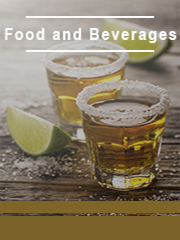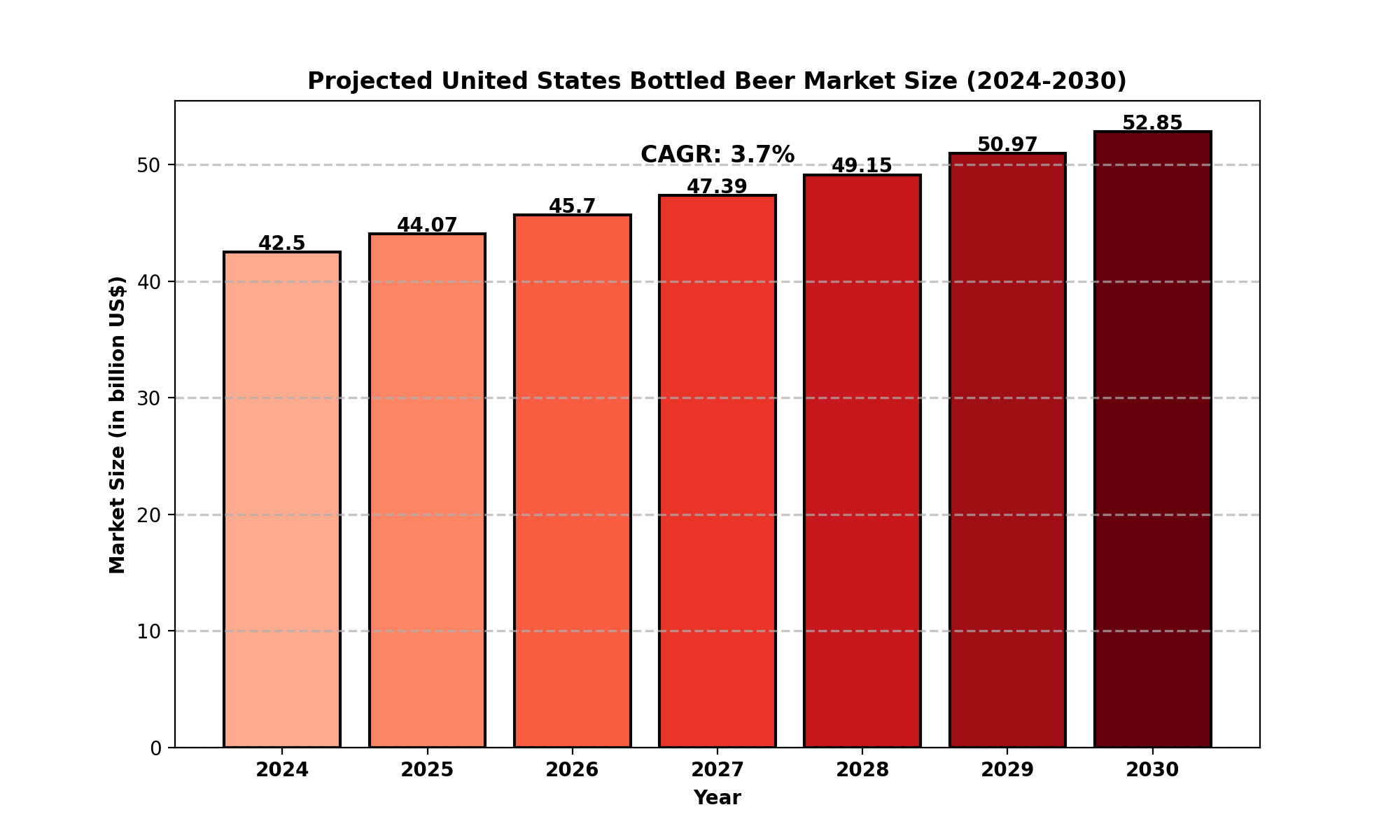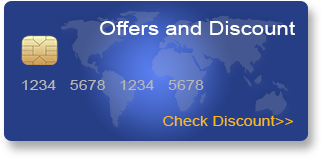TOP CATEGORY: Chemicals & Materials | Life Sciences | Banking & Finance | ICT Media

The United States bottled beer market consists of beer products packaged in glass bottles for both retail and on-premise consumption. The packaging format of bottled beer provides a longer shelf life compared to some other types of packaging like cans or kegs, and is often associated with premium brands or craft beer varieties. Bottled beer is distributed through an extensive network of retail points and is available for purchase both in physical stores and via online sales platforms.
The U.S. bottled beer market was valued at US$ 42.5 billion in 2024 and is projected to grow significantly in the following years. The market is expected to reach US$ 52.8 billion by 2030.
This growth is being driven by various factors, such as a rising preference for premium and craft beers, a shift towards sustainable packaging, and increased demand from both domestic and export markets.
Key Statistics:
2024 Market Value: US$ 42.5 billion
2030 Projected Market Value: US$ 52.8 billion
CAGR (2024-2030): 3.7%
Export Growth: 32% increase, primarily to Canada
Premium Beer Growth: 45% year-on-year (YoY) increase
Sustainability: 48% reduction in packaging waste through sustainable initiatives
Direct-to-Consumer Sales: 95% growth

Drivers
Several factors are propelling the growth of the bottled beer market in the United States:
Craft Beer Trend: The rise of craft breweries has been a major driver for bottled beer, with consumers increasingly opting for unique, small-batch brews. The craft beer segment grew by 65%, contributing significantly to market expansion.
Sustainability: The increasing focus on sustainability in the beer industry has led to innovations such as higher recycled glass content (85%), energy-efficient manufacturing processes, and reduced packaging waste.
Premiumization: The premium beer segment has grown substantially, driven by higher disposable incomes and consumers seeking high-quality beverages. This trend has led to the growth of premium brands and the expansion of the premium beer segment by 45% YoY.
Direct-to-Consumer Sales: The rise of online platforms and direct-to-consumer (DTC) channels has contributed to the market's growth, with DTC sales increasing by 95%. This shift enables breweries to expand their reach and access a larger customer base.
Restraints
Despite the market’s growth, there are some challenges:
Competition from Other Alcoholic Beverages: The U.S. market faces stiff competition from other alcoholic beverages, particularly spirits and wine, which are gaining popularity among younger consumers.
High Production Costs: The cost of glass bottles, raw materials, and energy can put pressure on producers, especially as they strive for greater sustainability and efficiency.
Changing Consumer Preferences: Younger generations, in particular, are turning toward healthier options, including low-alcohol beers, hard seltzers, and non-alcoholic beverages, which could affect bottled beer sales.
Opportunities
Export Expansion: The U.S. bottled beer market has seen a 32% increase in exports, especially to Canada. This opens up opportunities for American breweries to expand their footprint in international markets.
Sustainable Packaging: The growing focus on sustainability offers breweries the chance to innovate with eco-friendly packaging solutions, such as biodegradable or fully recyclable materials, to appeal to environmentally-conscious consumers.
Online Sales Channels: With the rise of e-commerce, the beer industry can further tap into the online retail market, boosting sales in both the domestic and international markets.
Challenges
Regulatory Challenges: The alcohol industry is heavily regulated, and any changes to these regulations, such as restrictions on alcohol sales or labeling requirements, could impact the market.
Fluctuations in Raw Material Prices: The prices of key ingredients such as barley, hops, and packaging materials can be volatile, potentially increasing the cost of production for bottled beer manufacturers.
Regional Analysis
The bottled beer market in the United States is influenced by various regional factors, including consumer preferences, distribution channels, and regulatory environments.
West Coast: The West Coast is home to some of the largest craft beer producers, with a significant consumer base for premium and craft beer. States like California, Oregon, and Washington are driving the growth of the craft beer market.
Midwest and Northeast: These regions have a strong presence of large-scale breweries, with a steady demand for standard and value beer segments. The East Coast, especially New York and Pennsylvania, sees considerable bottled beer consumption.
South: The South has seen a rise in bottled beer consumption, particularly among millennials and Gen Z consumers who are seeking diverse beer options.
The United States bottled beer market is highly competitive, with major players dominating the landscape. Some of the key companies in the market include:
Anheuser-Busch InBev: The world's largest beer company, with an extensive portfolio of bottled beer brands.
MillerCoors: Another major player in the market, known for both mainstream and craft beer offerings.
Constellation Brands: A leading beer importer in the U.S., known for brands like Corona.
Heineken USA: Heineken is a key player, offering both mainstream and premium bottled beer options.
Pabst Brewing Company: Known for its value beer offerings, Pabst is a strong competitor in the market.
These companies are constantly innovating, focusing on premiumization, sustainability, and enhancing consumer experience to maintain their market share.
This report provides a deep insight into the global bottled beer market, covering all its essential aspects. This ranges from a macro overview of the market to micro details of the market size, competitive landscape, development trends, niche markets, key market drivers and challenges, SWOT analysis, value chain analysis, etc.
The analysis helps the reader to shape the competition within the industries and strategies for the competitive environment to enhance potential profit. Furthermore, it provides a simple framework for evaluating and assessing the position of a business organization. The report structure also focuses on the competitive landscape of the Global bottled beer market. This report introduces in detail the market share, market performance, product situation, and operation situation of the main players, helping readers to identify the main competitors and understand the competition pattern of the market.
In a word, this report is a must-read for industry players, investors, researchers, consultants, business strategists, and anyone interested in the bottled beer industry.
Online Sales
Offline Sales
Value Beer
Standard Beer
Premium Beer
Anheuser-Busch InBev
MillerCoors
Constellation Brands
Heineken USA
Pabst Brewing Company
Boston Beer Company
Sierra Nevada Brewing Co.
New Belgium Brewing Company
Lagunitas Brewing Company
Yuengling Brewery
North America
Europe
Asia Pacific
Latin America
Middle East & Africa
What is the current market size of the U.S. bottled beer market?
Which are the key companies operating in the U.S. bottled beer market?
What are the key growth drivers in the U.S. bottled beer market?
Which regions dominate the U.S. bottled beer market?
What are the emerging trends in the U.S. bottled beer market?
Market Players & Competitor Analysis: The report covers the key players of the industry including Company Profile, Product Specifications, Production Capacity/Sales, Revenue, Price and Gross Margin 2019-2030 & Sales with a thorough analysis of the market’s competitive landscape and detailed information on vendors and comprehensive details of factors that will challenge the growth of major market vendors.
United Statesn Market Analysis: The report includes United Statesn market status and outlook 2019-2030. Further the report provides break down details about each region & countries covered in the report. Identifying its sales, sales volume & revenue forecast. With detailed analysis by types and applications.
Market Trends: Market key trends which include Increased Competition and Continuous Innovations.
Opportunities and Drivers: Identifying the Growing Demands and New Technology
Porters Five Force Analysis: The report provides with the state of competition in industry depending on five basic forces: threat of new entrants, bargaining power of suppliers, bargaining power of buyers, threat of substitute products or services, and existing industry rivalry.
Industry drivers, restraints, and opportunities covered in the study
Neutral perspective on the market performance
Recent industry trends and developments
Competitive landscape & strategies of key players
Potential & niche segments and regions exhibiting promising growth covered
Historical, current, and projected market size, in terms of value
In-depth analysis of the Bottled Beer Market
Overview of the regional outlook of the Bottled Beer Market
Access to date statistics compiled by our researchers. These provide you with historical and forecast data, which is analyzed to tell you why your market is set to change
This enables you to anticipate market changes to remain ahead of your competitors
You will be able to copy data from the Excel spreadsheet straight into your marketing plans, business presentations or other strategic documents
The concise analysis, clear graph, and table format will enable you to pinpoint the information you require quickly
Provision of market value (USD Billion) data for each segment and sub-segment
Indicates the region and segment that is expected to witness the fastest growth as well as to dominate the market
Analysis by geography highlighting the consumption of the product/service in the region as well as indicating the factors that are affecting the market within each region
Competitive landscape which incorporates the market ranking of the major players, along with new service/product launches, partnerships, business expansions, and acquisitions in the past five years of companies profiled
Extensive company profiles comprising of company overview, company insights, product benchmarking, and SWOT analysis for the major market players
The current as well as the future market outlook of the industry concerning recent developments which involve growth opportunities and drivers as well as challenges and restraints of both emerging as well as developed regions
Includes in-depth analysis of the market from various perspectives through Porter’s five forces analysis
Provides insight into the market through Value Chain
Market dynamics scenario, along with growth opportunities of the market in the years to come
6-month post-sales analyst support
Global Bottled Beer Market
United States Bottled Beer Market
Japan Bottled Beer Market
Germany Bottled Beer Market
South Korea Bottled Beer Market
Indonesia Bottled Beer Market
Brazil Bottled Beer Market
Customization of the Report: In case of any queries or customization requirements, please connect with our sales team, who will ensure that your requirements are meet.
1.1 Bottled Beer Product Introduction
1.2.1 United Statesn Bottled Beer Market Size Growth Rate by Type, 2019 VS 2023 VS 2030
1.2.2 Value Beer
1.2.3 Standard Beer
1.2.4 Premium Beer
1.3.1 United States Bottled Beer Market Size Growth Rate by Application, 2019 VS 2023 VS 2030
1.3.2 Online Sales
1.3.3 Offline Sales
1.4 United States Bottled Beer Sales Estimates and Forecasts 2019-2030
1.5 United States Bottled Beer Hydrocephalus Shunts Revenue Estimates and Forecasts 2019-2030
1.6 Study Objectives
1.7 Years Considered
2.1 United States Bottled Beer Sales by Manufacturers
2.1.1 United States Bottled Beer Sales by Manufacturers (2019-2024)
2.1.2 United States Bottled Beer Sales Market Share by Manufacturers (2019-2024)
2.1.3 Top Largest Manufacturers of Bottled Beer in 2023 in United States
2.2 United States Bottled Beer Revenue by Manufacturers
2.2.1 United States Bottled Beer Revenue by Manufacturers (2019-2024)
2.2.2 United States Bottled Beer Revenue Market Share by Manufacturers (2019-2024)
2.2.3 United States Top Companies by Bottled Beer Revenue in 2023
2.3 United States Bottled Beer Sales Price by Manufacturers (2019-2024)
2.4 Analysis of Competitive Landscape
2.4.1 Manufacturers Market Concentration Ratio (CR3 and HHI)
2.4.2 United States Bottled Beer by Company Type (Tier 1, Tier 2, and Tier 3)
2.4.3 United States Bottled Beer Manufacturers Geographical Distribution
2.5 Mergers & Acquisitions, Expansion Plans
3.1 Bottled Beer Market Size by Region: 2019-2030
3.1.1 United States Bottled Beer Sales by Region: 2019-2024
3.1.2 United States Bottled Beer Sales Forecast by Region (2025-2030)
3.1.3 United States Bottled Beer Revenue by Region: 2019-2024
3.1.4 United States Bottled Beer Revenue Forecast by Region (2025-2030)
4.1 United States Bottled Beer Sales by Type
4.1.1 United States Bottled Beer Historical Sales by Type (2019-2024)
4.1.2 United States Bottled Beer Forecasted Sales by Type (2025-2030)
4.1.3 United States Bottled Beer Sales Market Share by Type (2019-2030)
4.2 United States Bottled Beer Revenue by Type
4.2.1 United States Bottled Beer Historical Revenue by Type (2019-2024)
4.2.2 United States Bottled Beer Forecasted Revenue by Type (2025-2030)
4.2.3 United States Bottled Beer Revenue Market Share by Type (2019-2030)
4.3 United States Bottled Beer Price by Type
4.3.1 United States Bottled Beer Price by Type (2019-2024)
4.3.2 United States Bottled Beer Price Forecast by Type (2025-2030)
5.1 United States Bottled Beer Sales by Application
5.1.1 United States Bottled Beer Historical Sales by Application (2019-2024)
5.1.2 United States Bottled Beer Forecasted Sales by Application (2025-2030)
5.1.3 United States Bottled Beer Sales Market Share by Application (2019-2030)
5.2 United States Bottled Beer Revenue by Application
5.2.1 United States Bottled Beer Historical Revenue by Application (2019-2024)
5.2.2 United States Bottled Beer Forecasted Revenue by Application (2025-2030)
5.2.3 United States Bottled Beer Revenue Market Share by Application (2019-2030)
5.3 United States Bottled Beer Price by Application
5.3.1 United States Bottled Beer Price by Application (2019-2024)
5.3.2 United States Bottled Beer Price Forecast by Application (2025-2030)
6.1 Anheuser-Busch InBev
6.1.1 Anheuser-Busch InBev Corporation Information
6.1.2 Anheuser-Busch InBev Overview
6.1.3 Anheuser-Busch InBev in United States: Bottled Beer Sales, Price, Revenue and Gross Margin (2019-2024)
6.1.4 Anheuser-Busch InBev Bottled Beer Product Introduction
6.1.5 Anheuser-Busch InBev Recent Developments
6.2 MillerCoors
6.2.1 MillerCoors Corporation Information
6.2.2 MillerCoors Overview
6.2.3 MillerCoors in United States: Bottled Beer Sales, Price, Revenue and Gross Margin (2019-2024)
6.2.4 MillerCoors Bottled Beer Product Introduction
6.2.5 MillerCoors Recent Developments
6.3 Constellation Brands
6.3.1 Constellation Brands Corporation Information
6.3.2 Constellation Brands Overview
6.3.3 Constellation Brands in United States: Bottled Beer Sales, Price, Revenue and Gross Margin (2019-2024)
6.3.4 Constellation Brands Bottled Beer Product Introduction
6.3.5 Constellation Brands Recent Developments
6.4 Heineken USA
6.4.1 Heineken USA Corporation Information
6.4.2 Heineken USA Overview
6.4.3 Heineken USA in United States: Bottled Beer Sales, Price, Revenue and Gross Margin (2019-2024)
6.4.4 Heineken USA Bottled Beer Product Introduction
6.4.5 Heineken USA Recent Developments
6.5 Pabst Brewing Company
6.5.1 Pabst Brewing Company Corporation Information
6.5.2 Pabst Brewing Company Overview
6.5.3 Pabst Brewing Company in United States: Bottled Beer Sales, Price, Revenue and Gross Margin (2019-2024)
6.5.4 Pabst Brewing Company Bottled Beer Product Introduction
6.5.5 Pabst Brewing Company Recent Developments
6.6 Boston Beer Company
6.6.1 Boston Beer Company Corporation Information
6.6.2 Boston Beer Company Overview
6.6.3 Boston Beer Company in United States: Bottled Beer Sales, Price, Revenue and Gross Margin (2019-2024)
6.6.4 Boston Beer Company Bottled Beer Product Introduction
6.6.5 Boston Beer Company Recent Developments
6.7 Sierra Nevada Brewing Co.
6.7.1 Sierra Nevada Brewing Co. Corporation Information
6.7.2 Sierra Nevada Brewing Co. Overview
6.7.3 Sierra Nevada Brewing Co. in United States: Bottled Beer Sales, Price, Revenue and Gross Margin (2019-2024)
6.7.4 Sierra Nevada Brewing Co. Bottled Beer Product Introduction
6.7.5 Sierra Nevada Brewing Co. Recent Developments
6.8 New Belgium Brewing Company
6.8.1 New Belgium Brewing Company Corporation Information
6.8.2 New Belgium Brewing Company Overview
6.8.3 New Belgium Brewing Company in United States: Bottled Beer Sales, Price, Revenue and Gross Margin (2019-2024)
6.8.4 New Belgium Brewing Company Bottled Beer Product Introduction
6.8.5 New Belgium Brewing Company Recent Developments
6.9 Lagunitas Brewing Company
6.9.1 Lagunitas Brewing Company Corporation Information
6.9.2 Lagunitas Brewing Company Overview
6.9.3 Lagunitas Brewing Company in United States: Bottled Beer Sales, Price, Revenue and Gross Margin (2019-2024)
6.9.4Lagunitas Brewing Company Bottled Beer Product Introduction
6.9.5 Lagunitas Brewing Company Recent Developments
6.10 Yuengling Brewery
6.10.1 Yuengling Brewery Corporation Information
6.10.2 Yuengling Brewery Overview
6.10.3 Yuengling Brewery in United States: Bottled Beer Sales, Price, Revenue and Gross Margin (2019-2024)
6.10.4 Yuengling Brewery Bottled Beer Product Introduction
6.10.5 Yuengling Brewery Recent Developments
7.1 Bottled Beer Industry Chain Analysis
7.2 Bottled Beer Key Raw Materials
7.2.1 Key Raw Materials
7.2.2 Raw Materials Key Suppliers
7.3 Bottled Beer Production Mode & Process
7.4 Bottled Beer Sales and Marketing
7.4.1 Bottled Beer Sales Channels
7.4.2 Bottled Beer Distributors
7.5 Bottled Beer Customers
8.1.1 Bottled Beer Industry Trends
8.1.2 Bottled Beer Market Drivers
8.1.3 Bottled Beer Market Challenges
8.1.4 Bottled Beer Market Restraints
10.1 Research Methodology
10.1.1 Methodology/Research Approach
10.1.2 Data Source
10.2 Author Details
10.3 Disclaimer
Frequently Asked Questions ?
